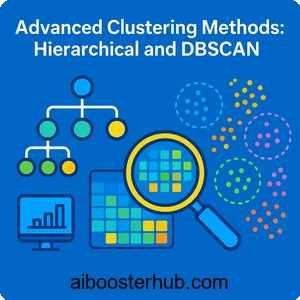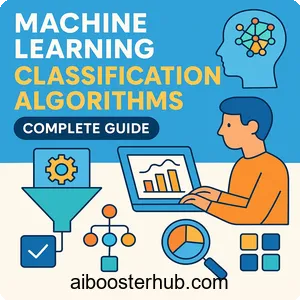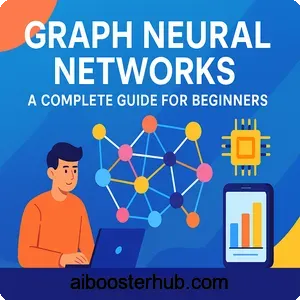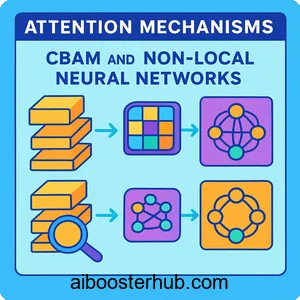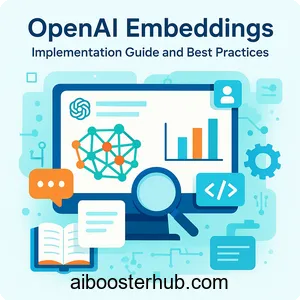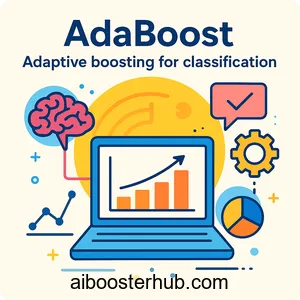Are Transformers Effective for Time Series Forecasting?
The emergence of transformer models has revolutionized natural language processing and computer vision, but their application to time series forecasting remains a topic of intense debate. While transformers for time series have gained significant attention in the AI community, the question persists: are they truly effective for predicting temporal patterns, or are simpler models still superior?
This comprehensive exploration examines the capabilities, limitations, and practical applications of transformer models in the realm of time series forecasting.
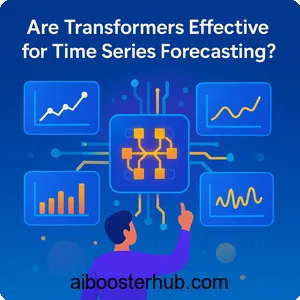
Content
Toggle1. Understanding transformers and their architecture
The core mechanism: attention
At the heart of transformer models lies the attention mechanism, which allows the model to weigh the importance of different parts of the input sequence. Unlike recurrent neural networks that process data sequentially, transformers can attend to all positions simultaneously, making them highly parallelizable and efficient for training.
The attention mechanism computes three vectors for each input: Query (Q), Key (K), and Value (V). The attention score is calculated as:
$$ \text{Attention}(Q, K, V) = \text{softmax}\left(\frac{QK^T}{\sqrt{d_k}}\right)V $$
where \(d_k\) is the dimension of the key vectors. This formula enables the model to focus on relevant time steps when making predictions.
Multi-head attention
Transformers employ multi-head attention, which runs multiple attention mechanisms in parallel. Each head can learn different aspects of the relationships in the data:
$$ \text{MultiHead}(Q, K, V) = \text{Concat}(\text{head}_1, …, \text{head}_h)W^O $$
where each \(\text{head}_i = \text{Attention}(QW_i^Q, KW_i^K, VW_i^V)\). This allows the model to capture complex temporal dependencies at multiple scales.
Positional encoding
Since transformers don’t inherently understand sequence order, positional encoding is crucial for time series applications. The original transformer uses sinusoidal functions:
$$ PE_{(pos, 2i)} = \sin\left(\frac{pos}{10000^{2i/d_{model}}}\right) $$
$$ PE_{(pos, 2i+1)} = \cos\left(\frac{pos}{10000^{2i/d_{model}}}\right) $$
where \(pos\) is the position and \(i\) is the dimension. For time series, this encoding helps the model understand temporal ordering and periodicity.
2. Advantages of transformers for time series forecasting
Capturing long-range dependencies
One of the most significant advantages of transformer models is their ability to capture long-range dependencies in time series data. Traditional methods like ARIMA or even LSTM networks struggle with very long sequences due to the vanishing gradient problem or limited memory capacity.
Consider a retail sales forecasting scenario where you need to predict holiday season demand. A transformer can simultaneously attend to:
- Last year’s holiday sales patterns
- Recent weekly trends
- Day-of-week effects
- Special promotional events from months ago
This global view allows the model to connect distant but relevant events that impact current predictions.
Parallel processing efficiency
Unlike recurrent networks that must process sequences step-by-step, transformers process entire sequences in parallel. This dramatically reduces training time for large time series datasets. For instance, training a transformer on millions of sensor readings from IoT devices can be completed in hours rather than days.
Handling multivariate relationships
Transformers excel at modeling complex relationships between multiple time series. The attention mechanism naturally captures cross-series dependencies. For example, in financial forecasting:
import numpy as np
import torch
import torch.nn as nn
class TimeSeriesTransformer(nn.Module):
def __init__(self, n_features, d_model=64, n_heads=8, n_layers=3):
super().__init__()
self.embedding = nn.Linear(n_features, d_model)
encoder_layer = nn.TransformerEncoderLayer(
d_model=d_model,
nhead=n_heads,
dim_feedforward=256,
dropout=0.1,
batch_first=True
)
self.transformer = nn.TransformerEncoder(encoder_layer, n_layers)
self.output = nn.Linear(d_model, n_features)
def forward(self, x):
# x shape: (batch, seq_len, n_features)
x = self.embedding(x)
x = self.transformer(x)
return self.output(x[:, -1, :]) # Predict next time step
# Example usage
n_features = 5 # Stock prices, volumes, indices, etc.
model = TimeSeriesTransformer(n_features)
sample_data = torch.randn(32, 100, n_features) # 32 samples, 100 time steps
predictions = model(sample_data)
The model learns to attend to correlations between different stocks, trading volumes, and market indices automatically.
3. Challenges and limitations in time series contexts
The permutation invariance problem
A fundamental issue with applying transformers to time series is that the attention mechanism is permutation invariant—it doesn’t inherently care about the order of inputs. While positional encoding addresses this, it may not capture the critical temporal causality that defines time series data.
For example, knowing that temperature dropped after rainfall is very different from rainfall occurring after a temperature drop. Traditional time series methods naturally preserve this causality, but transformers must learn it through positional encodings.
Overfitting on limited data
Transformers are parameter-heavy models that require substantial data to train effectively. Many time series forecasting problems involve relatively small datasets—perhaps a few thousand observations. In these scenarios, simpler models often outperform transformers.
Consider forecasting monthly sales for a small business with only three years of data (36 data points). A transformer with millions of parameters would likely overfit dramatically:
from sklearn.metrics import mean_squared_error
import numpy as np
# Simulate small dataset scenario
def evaluate_small_data(model, n_samples=36, n_repeats=100):
"""
Test model performance on limited time series data
"""
errors = []
for _ in range(n_repeats):
# Generate simple seasonal pattern
t = np.arange(n_samples)
y = 100 + 20 * np.sin(2 * np.pi * t / 12) + np.random.randn(n_samples) * 5
# Split train/test
train_size = int(0.8 * n_samples)
train, test = y[:train_size], y[train_size:]
# Simple baseline: seasonal naive forecast
predictions = y[train_size-12:n_samples-12] if len(y) >= 12 else [np.mean(train)] * len(test)
error = mean_squared_error(test, predictions[:len(test)])
errors.append(error)
return np.mean(errors)
# In practice, simple baselines often outperform complex models on small datasets
baseline_error = evaluate_small_data(None)
print(f"Baseline MSE on small data: {baseline_error:.2f}")
Computational complexity
The self-attention mechanism has \(O(L^2)\) complexity where \(L\) is the sequence length. For very long time series (e.g., high-frequency sensor data with millions of observations), this becomes computationally prohibitive. Various efficient attention mechanisms have been proposed, but they often sacrifice some modeling capability.
Lack of inductive bias for temporal data
Unlike recurrent networks or convolutional networks that have architectural biases suited for sequential or local patterns, transformers are highly flexible but lack specific inductive biases for time series. This means they must learn temporal patterns from scratch, requiring more data and potentially missing domain-specific structure.
4. Specialized transformer architectures for time series
Temporal fusion transformer
The temporal fusion transformer is specifically designed for multi-horizon forecasting with multiple input types. It incorporates several innovations:
- Variable selection networks that identify the most relevant features
- Gating mechanisms to skip unnecessary components
- Multi-horizon attention for capturing different temporal patterns
import torch
import torch.nn as nn
class TemporalFusionTransformer(nn.Module):
def __init__(self, n_static_features, n_time_varying_features,
hidden_dim=128, n_heads=4, n_quantiles=3):
super().__init__()
# Variable selection for static features
self.static_selection = nn.Sequential(
nn.Linear(n_static_features, hidden_dim),
nn.ReLU(),
nn.Linear(hidden_dim, n_static_features),
nn.Softmax(dim=-1)
)
# LSTM for local processing
self.lstm_encoder = nn.LSTM(
n_time_varying_features,
hidden_dim,
batch_first=True
)
# Multi-head attention for temporal relationships
self.temporal_attention = nn.MultiheadAttention(
hidden_dim,
n_heads,
batch_first=True
)
# Quantile output for uncertainty estimation
self.quantile_output = nn.Linear(hidden_dim, n_quantiles)
def forward(self, static_features, time_varying_features):
# Select important static features
static_weights = self.static_selection(static_features)
static_context = static_features * static_weights
# Encode temporal patterns
lstm_out, _ = self.lstm_encoder(time_varying_features)
# Apply temporal attention
attn_out, _ = self.temporal_attention(lstm_out, lstm_out, lstm_out)
# Combine with static context
combined = attn_out + static_context.unsqueeze(1)
# Generate quantile predictions
return self.quantile_output(combined)
# Example: Forecasting electricity demand
model = TemporalFusionTransformer(
n_static_features=3, # location, capacity, type
n_time_varying_features=8 # temperature, hour, day_of_week, etc.
)
The temporal fusion transformer has shown strong performance on benchmarks involving real-world forecasting tasks with mixed data types.
Informer and efficient attention variants
The Informer model addresses the computational complexity issue through ProbSparse attention, which reduces complexity from \(O(L^2)\) to \(O(L \log L)\):
$$ \text{ProbSparse}(Q, K, V) = \text{softmax}\left(\frac{\bar{Q}K^T}{\sqrt{d}}\right)V $$
where \(\bar{Q}\) contains only the most important queries selected based on their attention scores. This makes transformers practical for very long sequences.
Autoformer: decomposition attention
Autoformer introduces series decomposition into the transformer architecture, separating trend and seasonal components:
$$ X_t = X_t^{\text{trend}} + X_t^{\text{seasonal}} $$
The model applies attention separately to these components, respecting the inherent structure of time series data. This architectural choice provides better inductive bias for temporal forecasting.
5. Empirical evidence: when do transformers excel?
Success stories in complex domains
Transformers have demonstrated clear superiority in several challenging scenarios:
Traffic forecasting: In urban traffic prediction with hundreds of sensors, transformers effectively capture spatial-temporal dependencies. The attention mechanism learns which sensors influence each other and how traffic patterns propagate through the network.
Energy demand forecasting: For national-level electricity demand with multiple exogenous variables (weather, holidays, economic indicators), temporal fusion transformer models have achieved state-of-the-art results by effectively integrating diverse data sources.
Financial market prediction: In high-frequency trading scenarios with multiple correlated assets, transformers can model complex market microstructure and cross-asset dependencies that simpler models miss.
Where simpler models win
However, extensive benchmarking has revealed scenarios where transformers underperform:
Univariate forecasting with limited data: For simple univariate series with fewer than a thousand observations, classical methods like ARIMA or even simple exponential smoothing often achieve lower errors.
Purely seasonal patterns: When time series exhibit strong, regular seasonality without complex interactions, seasonal decomposition methods or Prophet-style models can be more accurate and interpretable.
Linear relationships: Recent research has shown that simple linear models can outperform transformers on datasets where relationships are predominantly linear:
import numpy as np
from sklearn.linear_model import Ridge
from sklearn.metrics import mean_absolute_error
def compare_linear_vs_complex(data, lookback=24):
"""
Compare simple linear model vs complex approach
"""
train_size = int(0.8 * len(data))
train, test = data[:train_size], data[train_size:]
# Prepare features: simple lag features
def create_features(series, lookback):
X, y = [], []
for i in range(lookback, len(series)):
X.append(series[i-lookback:i])
y.append(series[i])
return np.array(X), np.array(y)
X_train, y_train = create_features(train, lookback)
X_test, y_test = create_features(test, lookback)
# Simple linear model
linear_model = Ridge(alpha=1.0)
linear_model.fit(X_train, y_train)
linear_pred = linear_model.predict(X_test)
linear_mae = mean_absolute_error(y_test, linear_pred)
return linear_mae
# Generate dataset with linear trend and seasonality
t = np.arange(1000)
data = 0.5 * t + 50 * np.sin(2 * np.pi * t / 24) + np.random.randn(1000) * 10
mae = compare_linear_vs_complex(data)
print(f"Linear model MAE: {mae:.2f}")
For many business forecasting problems with predominantly linear trends, this simplicity is advantageous.
6. Practical considerations and best practices
Data preprocessing for transformers
Proper preprocessing is crucial for transformer success in time series:
Normalization: Transformers are sensitive to input scale. Apply standardization or min-max scaling:
def prepare_timeseries_data(data, window_size, forecast_horizon):
"""
Prepare time series data for transformer training
"""
from sklearn.preprocessing import StandardScaler
# Normalize each feature
scaler = StandardScaler()
data_normalized = scaler.fit_transform(data.reshape(-1, 1)).flatten()
# Create sliding windows
X, y = [], []
for i in range(len(data_normalized) - window_size - forecast_horizon + 1):
X.append(data_normalized[i:i+window_size])
y.append(data_normalized[i+window_size:i+window_size+forecast_horizon])
return np.array(X), np.array(y), scaler
# Example
raw_data = np.random.randn(1000).cumsum() # Random walk
X, y, scaler = prepare_timeseries_data(raw_data, window_size=48, forecast_horizon=12)
print(f"Input shape: {X.shape}, Output shape: {y.shape}")
Handling missing values: Use forward-fill or interpolation rather than leaving gaps, as transformers struggle with irregular sampling.
Feature engineering: While transformers can learn representations, providing temporal features (hour, day of week, month) as additional inputs improves performance significantly.
Model selection guidelines
Choose transformers when:
- You have large datasets (10,000+ observations)
- Multiple related time series with complex interactions exist
- Long-range dependencies are critical
- You need to incorporate diverse data types (static features, future known inputs)
Choose simpler models when:
- Data is limited (< 1,000 observations)
- Patterns are predominantly linear or simply seasonal
- Interpretability is crucial for business stakeholders
- Computational resources are constrained
Hybrid approaches
Some of the most successful practical implementations combine transformers with other techniques:
class HybridForecastModel(nn.Module):
def __init__(self, n_features, decompose=True):
super().__init__()
self.decompose = decompose
if decompose:
# Use classical decomposition for trend/seasonal
from statsmodels.tsa.seasonal import seasonal_decompose
self.decomposer = seasonal_decompose
# Transformer for residuals or complex patterns
self.transformer = TimeSeriesTransformer(n_features)
def forward(self, x):
if self.decompose:
# Decompose into trend + seasonal + residual
# Apply transformer only to residual component
# This gives transformer easier task to learn
pass
return self.transformer(x)
This approach leverages the strengths of both classical methods and deep learning.
7. Conclusion
Transformers for time series represent a powerful tool in the forecasting arsenal, but they are not a universal solution. Their effectiveness depends critically on the specific characteristics of your forecasting problem—data size, complexity, and the nature of temporal dependencies.
The evidence suggests that transformer models excel in scenarios with large datasets, complex multivariate relationships, and long-range dependencies that simpler models cannot capture. The temporal fusion transformer and other specialized architectures have pushed the boundaries of what’s possible in multi-horizon forecasting with heterogeneous data sources. However, for many practical business forecasting problems with limited data or predominantly linear patterns, simpler models remain more effective, efficient, and interpretable. The key to success lies in understanding your data’s characteristics and choosing the right tool for the job rather than defaulting to the most sophisticated architecture available.


